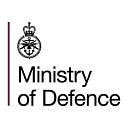Intercepting a Russian aircraft
Typhoon fighter jets in Lithuania swiftly took to the skies to intercept a Russian aircraft
On 2 June British jets, deployed to Lithuania, responded rapidly to a Russian intelligence aircraft operating over the Baltic Sea.
The pilots are ready to respond to any threats to NATO Allies’ airspace at a moments notice. These jets are scrambled to monitor and investigate the aircraft flying near Lithuanian airspace.
In military speak the term scramble is given when military aircraft need to take take of very quickly.
The pilots will often be scrambled to investigate aircraft that have their transponders switched off (i.e they are not being picked up on radars) or those without a flight plan.
“The initial scramble was a real shot of adrenaline, but once airborne it was important to remain calm and professional to ensure we maintained both the safety and integrity of NATO airspace. This is what all of our training is designed to prepare us for however, at the end of the day it’s just my job.”
— A Typhoon pilot from 6 Sqn
This intercept is part of the routine NATO Air Policing mission (Operation AZOTIZE) that has been conducted to police the skies since 2004.
The Typhoons from 6 Squadron have been in Lithuania since early May to primarily conduct NATO Air Policing mission.
Since this deployment began, the RAF pilots have been busy on various exercises. Only recently they were putting NATO warships through their paces with a mock exercise in the Baltic sea.
For RAF Typhoons, quick reaction alert (QRA) is their most essential role, especially in the UK, Falkland and Baltic airspace, but the aircraft has also flown precision attack missions in all its combat deployments to date.
